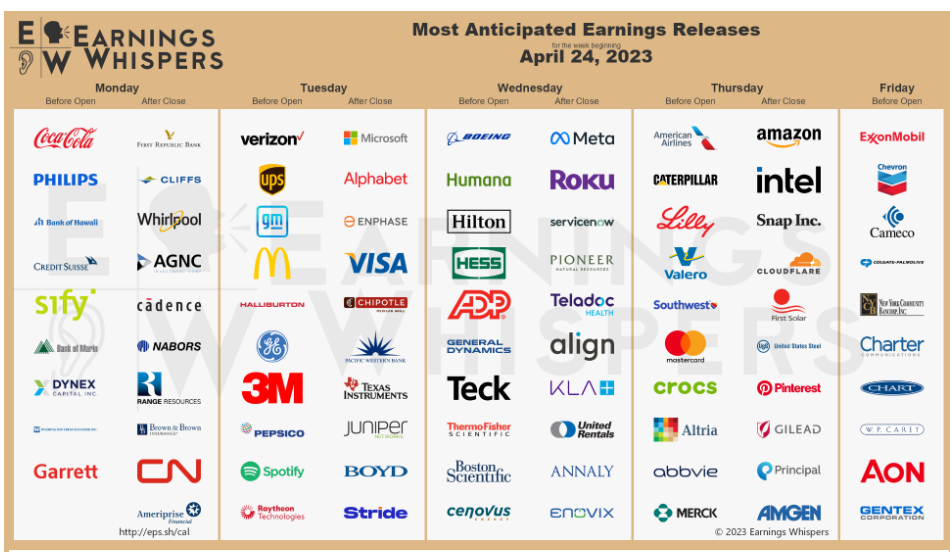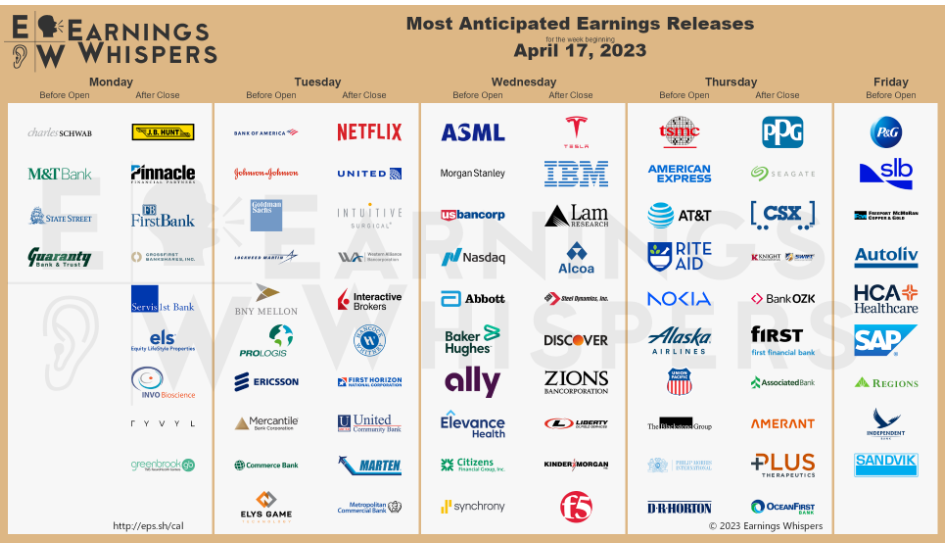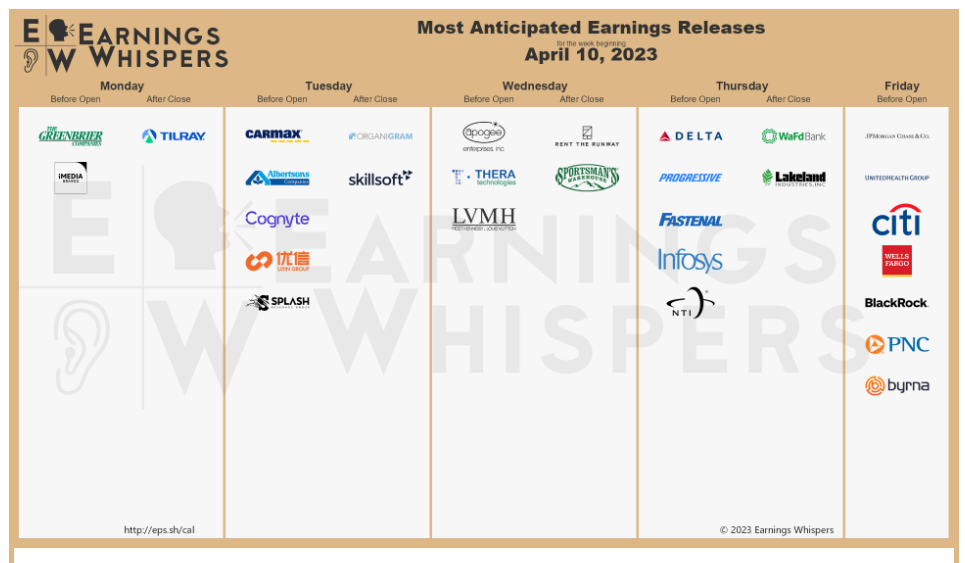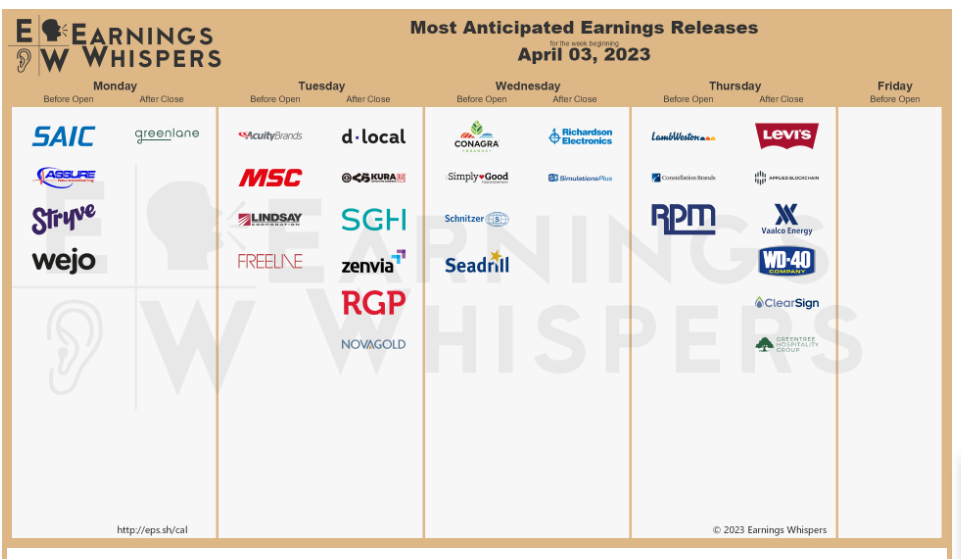Week of Apr 23, 2023 Weekly Recap & The Week Ahead
Monday, April 24th, 2023“Something that everyone knows isn’t worth anything.” ― Bernard Baruch
1. Single Dose of Omicron-Targeting Vaccines to Become Main Covid-19 Shot in U.S. — the Food and Drug Administration also authorized a second booster of the updated shots for people at high risk of Covid-19, specifically people 65 years and older or people who have weak immune systems.
The agency’s actions mark the latest tweaks to Covid-19 vaccines, and could be followed up by further efforts to simplify the complicated vaccination regimen, perhaps by enshrining plans for a once-a-year shot for most people.
2. Home Prices in March Posted Biggest Annual Decline in 11 Years — U.S. existing-home sales decreased 2.4% in March from the prior month to a seasonally adjusted annual rate of 4.44 million, the National Association of Realtors reported. March sales fell 22% from a year earlier. March marked the 13th time in the previous 14 months that sales have slowed. The housing market had a surprisingly strong February, when sales rose a revised 13.75% from the previous month. But after mortgage rates ticked higher, March sales resumed the extended period of declines.
3. Auto Dealers Feel the Squeeze — AutoNation said late last week that on a same-store basis, it sold 2.8% fewer new vehicles and 17.5% fewer used cars in the first quarter compared with a year earlier. Lithia LAD -0.08%decrease; red down pointing triangle Motors on Wednesday said it sold 6.3% fewer new vehicles and 2.4% fewer used vehicles over the same period. Cars are sitting on lots for longer as a result: Lithia said there were about 52 days of supply of new vehicles in the first quarter, up from 47 days a quarter earlier. AutoNation is carrying 25 days’ worth of new vehicle supply, up from 19 days from the prior quarter. Rising rates aren’t only a problem when it comes to selling cars. With so many more of them idling on lots, rising interest rates are adding up to higher floor plan financing expenses, eroding profits: Lithia Motors and AutoNations’ floor plan interest expenses last quarter were more than five times what they were a year earlier.
4. U.S. Begins Planning for 6G Wireless Communications — the White House will meet with corporate, government and academic experts to begin developing goals and strategies for the new 6G communications technology, which would have the ability to take cloud computing and the mobile internet to true global ubiquity, among other improvements.
The next generation of telecom is still years away from deployment, but it could pave the way for global internet access still unavailable with the current 5G standard, which makes smartphone downloads and wireless hot-spot connections faster. Expanding access to the internet has been a priority for the Biden administration as part of its infrastructure
The week ahead — Economic data from Econoday.com:



